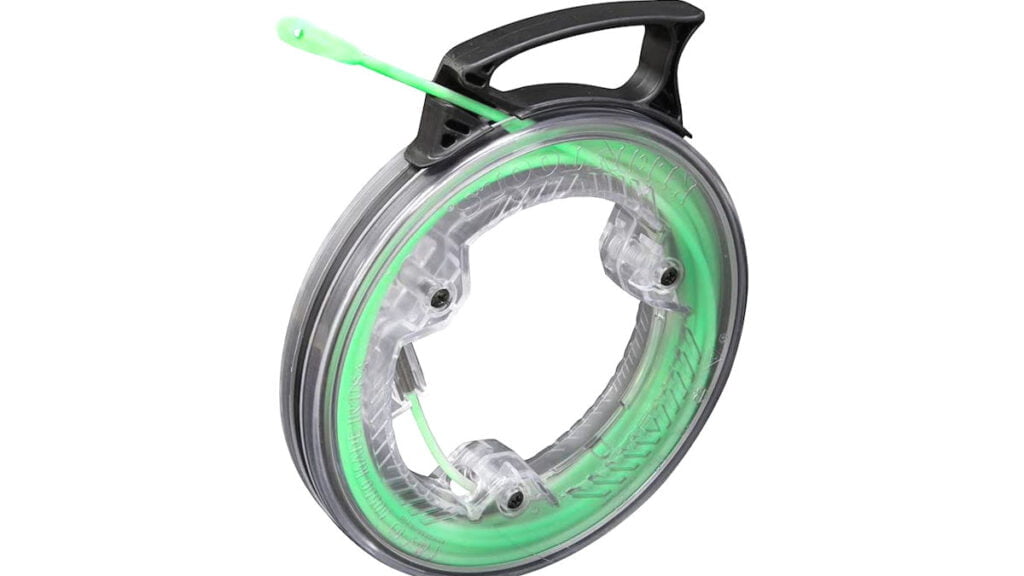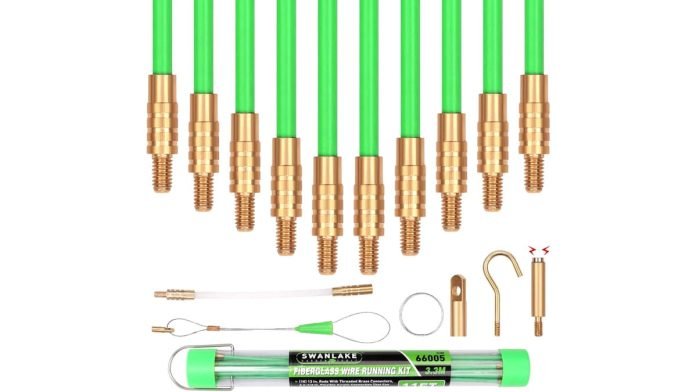Cabling Over Suspended Ceilings More Efficiently.
Cabling Over Suspended Ceilings – Cabling for alarm sensors over suspended ceilings can be a serious pain, especially in complex environments with internal wall divisions at floor level or in ceiling spaces cleverly designed to deny a tech convenient supports to suspend cabling safely out of the way.
Typically, more than 1 tech might attempt to progress the cable run in short stages using a heavier than usual fish tape, though this is not as easy as it sounds when there are obstacles on the tiles, including insulation, ducting or the backing plates of existing electrical devices.
Better is to employ fish rods, which are semi-flexible, allowing techs to reach many metres without the rod drooping and catching on obstacles. GlowFish rods are luminous, allowing you (or better still your 65kg apprenctice) to spot the rod tip and establish the location of the cable end. Something to note with fish rods or fish tape is that they should be non conductive.
Another option is to use a flat coil of lightweight flexible material – plastic or aluminium – around 5-8 metres in length that when released will unroll itself in the direction it’s pointed, rolling over any obstacles on the ceiling in the process. Once the coil has unrolled itself, the tech can pace out the known length of the coil and lift a ceiling tile certain of quickly finding the end. This coil is then used as a draw to gently pull the zone cable over the ceiling.
Cabling Over Suspended Ceilings
Another option if you have no fishing rod to hand is to use a length of PVC conduit heavy enough not to bend too much and light enough to bend just enough. Cable can then be taped to the conduit, which should be measured and marked for length, and the conduit and wire are then fed into the ceiling space above the ceiling tiles, before being lowered into position when the right length of cable has been carried to get the cable end where you need it.
The idea with all these techniques is to reduce time consuming ladder movements to make installations faster and more efficient, as well as allowing 1 installer to undertake cabling operations that might otherwise require 2 techs.
Something to note is that you don’t want to leave your zone cabling laying on ceiling tiles. Instead, once it’s in the ceiling space you’ll need to lift tiles along the run to access framework or internal walls that allow cabling to be suspended along the route using clamps and cable ties.
When undertaking this part of the process, you don’t want to use more clamp points than you need to use, you don’t want the cable to sag, and you don’t want the clamp spacing in the run to require cable ties to be cinched too tightly.
You can read more SEN tech talk here see more SEN news here and check out cable fishing rods here.
“Cabling Over Suspended Ceilings More Efficiently.”









